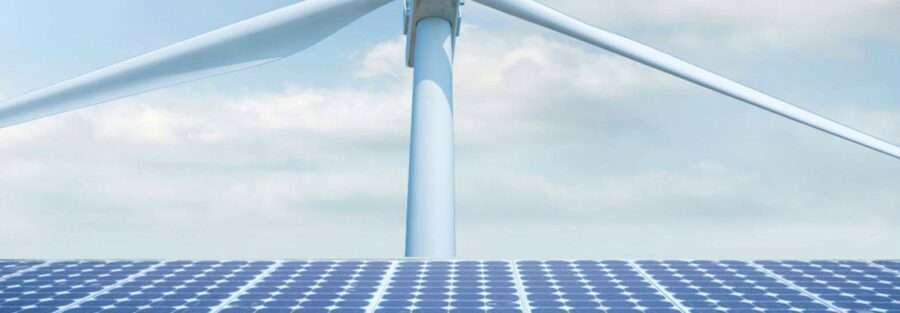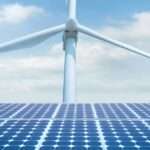What is renewable energy?
- Natural sources of energy that do not decay;
- This energy keeps on being renewed;
This energy is not polluting.
What is India’s renewable energy (RE) capacity
Small hydro: 4.83 GW;
Bio-power: 10.62 GW;
Large hydro: 46.51 GW;
Nuclear: 6.78 GW]
- India today ranks fourth in the world in terms of installed renewable energy capacity, fifth in solar power, and fourth in wind power;
- India’s total ‘installed power capacity is: 392.01 GW
What is the percentage of the estimated share of ‘Renewable Energy (RE)’ of ŌĆśIndia’s total installed electricity capacity’? 40.1%
Indian Renewable Energy Development Agency Limited (IREDA)
- The goal of IREDA is “eternal energy”;
- The main objectives of IREDA are:
- Producing electricity and/or energy through new and renewable sources;
- Protection of energy through energy efficiency; Providing financial assistance/innovative financing to specific projects and planning; Continuous improvement in systems, processes, and institutions;
- Improving the efficiency of services provided to customers;
Trying to become a competitive institution through customer satisfaction
What was the commitment made by India in the 26th United Nations Climate Change Conference [COP26]?
What was the commitment made by India in the 26th United Nations Climate Change Conference [COP26]?
What are the challenges related to achieving the goal of ‘Renewable Energy (RE)’:
- Financial Challenges;
- Land Acquisition Challenges;
Challenges in Creating an Ecosystem
Financial Challenges
- The challenges of raising the necessary finance;
- The challenges of getting the banking sector ready to lend money;
- Challenges of long-term international financing;
- Technical challenges;
- Challenges of mitigating financial risk;
The challenges of creating an appropriate financial system;
Land Acquisition Challenges
- Challenges of Land Identification for Renewable Energy
- Challenges of Land Conversion;
- Challenges to clearances under the Land Ceiling Act;
- Challenges related to land lease rent;
- Challenges related to clearance from the Department of Revenue;
Challenges in fixing the role of state governments for land acquisition;
Challenges in creating an ecosystem
- Challenges of creating an innovation and manufacturing ecosystem in the country;
- The challenges of integrating a large proportion of renewable energy with the grid;
- Challenges in enabling a firm and dispatchable power supplies from renewable energy
Challenges of enabling renewable energy penetration in so-called hard-to-decarbonize regions
What are the government initiatives related to ‘Renewable Energy (RE)’ sector?
- PM-Kusum;
- Production Linked Incentive (PLI) Scheme:
- Solar Park Scheme;
- Roof Top Solar Program Phase-II;
- Central Public Sector Undertakings (CPSU) Scheme;
- National Hydrogen Mission;
- International Solar Alliance [ISA];
- OSOWOG [One Sun, One World, One Grid];
- ‘National Wind-Solar Hybrid Policy 2018’;
- ‘National Offshore Wind Energy Policy 2015’;
- Other renewable schemes for power generation
- Solar Cities Development Program
Surya Mitra Scheme
PM-Kusum;
- The scheme was launched by the ‘Ministry of New and Renewable Energy (MNRE)’;
- Purpose:
- Supporting the installation of ‘off-grid solar pumps’ in rural areas and
- Reducing ‘Grid Dependence’ in ‘Grid Connected Areas’
- What is the power grid?
It is the ‘electrical network’ that generates and distributes electricity over a large area.
Production Linked Incentive (PLI) Scheme:
Purpose:
Under the Production Linked Incentive Scheme ŌĆ£National Program on High-Efficiency Solar Photovoltaic (PV) ModulesŌĆØ to manufacture in India the following:
- Upstage vertical components;
- Cells, Wafers [a thin piece of semiconductor] and Polysilicon etc;
- High-Efficiency Solar Photovoltaic (PV) Modules;
- To reduce dependence on imports in the ‘Solar Photovoltaic (PV) Sector’
How much amount has been used in this scheme? – Ōé╣ 4500 crore
Solar Park Scheme;
Purpose:
- To develop countrywide “Solar Parks and Ultra Mega Solar Power Projects”;
Achieving a ‘targeted capacity of 40 GW by March 2022 to facilitate ‘Large Scale Grid Connected Solar Power Projects;
Roof Top Solar Program Phase-II;
Purpose:
- Providing financial assistance to the residential sector for achieving solar rooftop capacity of up to 4 GW;
- Incentivizing ‘Power Distribution Companies’ for ‘Incremental Achievement’
Central Public Sector Undertakings (CPSU) Scheme;
Purpose:
- Its objectives are the same as those of the ‘Production Linked Incentive (PLI) Scheme’;
- It aims to set up 12 GW of ‘Grid-Connected Solar Photovoltaic (PV) Power Projects’ with domestic ‘Cells and Solar Photovoltaic (PV) Modules’ by CPSU ‘;
‘Viability Gap Funding Assistance’ is also provided under the scheme.
National Hydrogen Mission;
- Objective:
It aims to make India a global hub for ‘Green Hydrogen Production and Export’
International Solar Alliance [ISA];
What is ISA?
- ISA is an ‘Intergovernmental Treaty-Based Organization’ with a global mandate to catalyse solar development by helping to reduce the cost of financing and technology;
Recently ‘United States of America’ has become the 101st member country to join ISA.
OSOWOG [One Sun, One World, One Grid];
- What is OSOWOG?
- OSOWOG was jointly released by India and the UK at the ‘COP26 Climate Meet’ in ‘Glasgow’.
- Objective:
To build ‘A Global Green Energy Grid’ mainly focusing on ‘Solar and Wind Energy’.
‘National Wind-Solar Hybrid Policy 2018’;
- Objective:
To provide a framework for promoting ‘Large Grid Connected Wind-Solar Photovoltaic (PV) Hybrid Systems’ for ‘wind and solar resources’, ‘transmission infrastructure’ and ‘optimal and efficient use of land’.
‘National Offshore Wind Energy Policy 2015’;
The policy was notified in October 2015 with the objective of developing ‘offshore wind energy’ in the ‘Indian Exclusive Economic Zone (EEZ)’ along the ‘Indian coastline of 7600 km’.
Program on Energy Production from Urban, Industrial and Agricultural Wastes/Residues;
ŌĆó Scheme for promotion of ‘Biomass Based Co-Generation’ in ‘Sugar Mills’ and ‘Other Industries’.
ŌĆó Biogas Power (Off-Grid) Generation and Thermal Applications Program (BPGTP).
ŌĆó New National Biogas and Organic Manure Program (NNBOMP).
Solar Cities Development Program
56 Solar City Projects have been approved under this program
Surya Mitra Scheme:
The scheme was launched in May 2015 to create 50,000 trained personnel within a period of five years (2015-16 to 2019-20);



